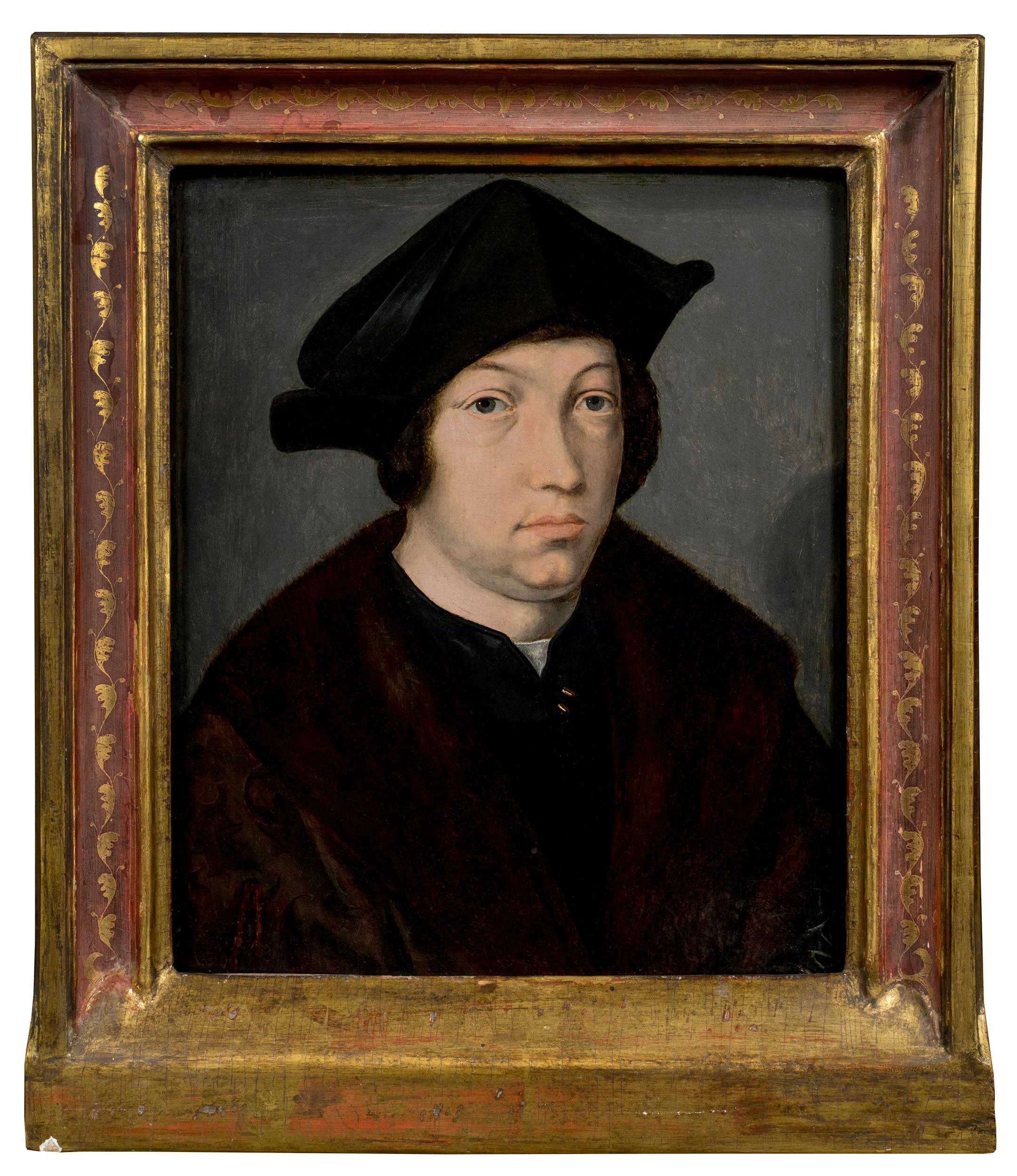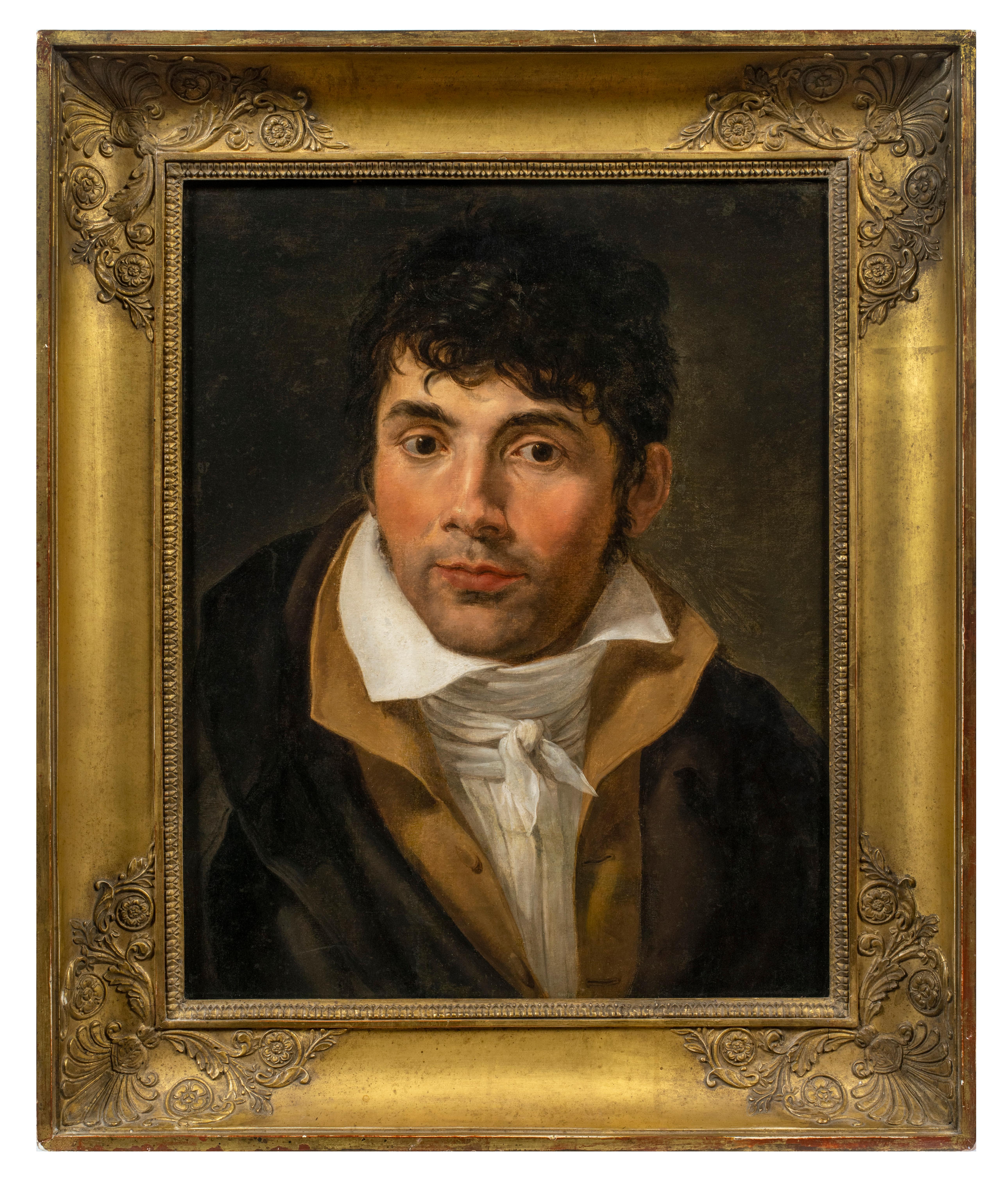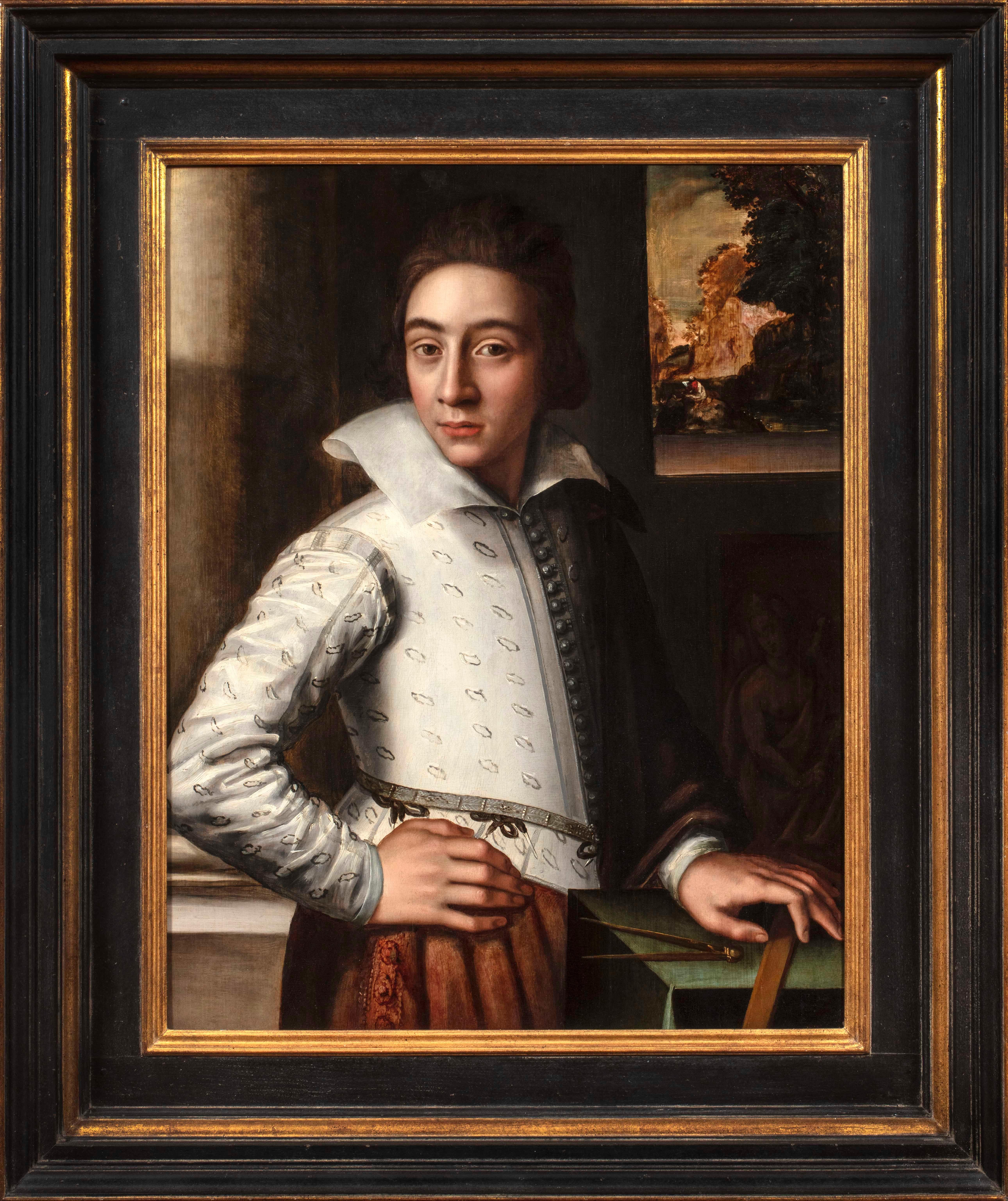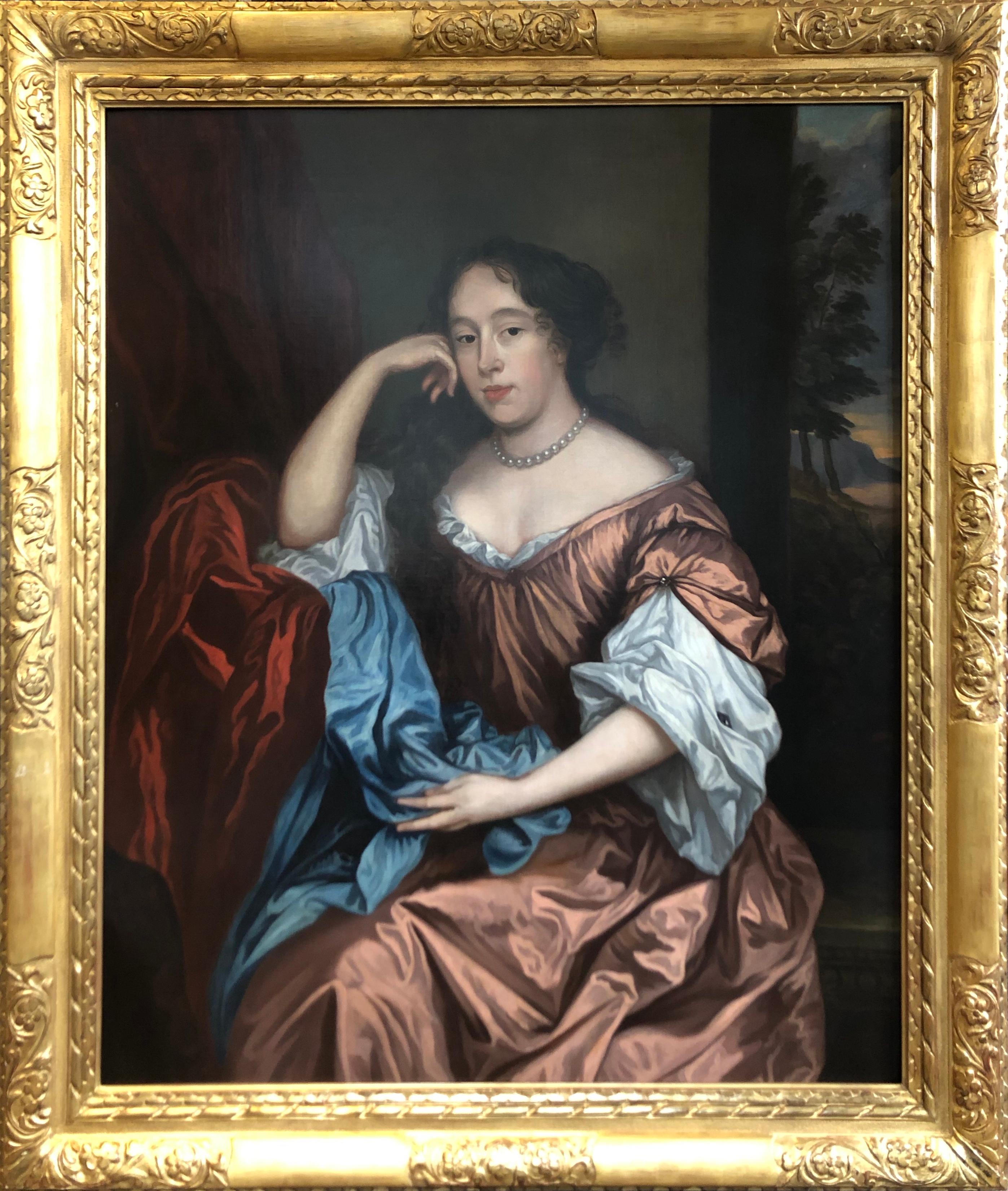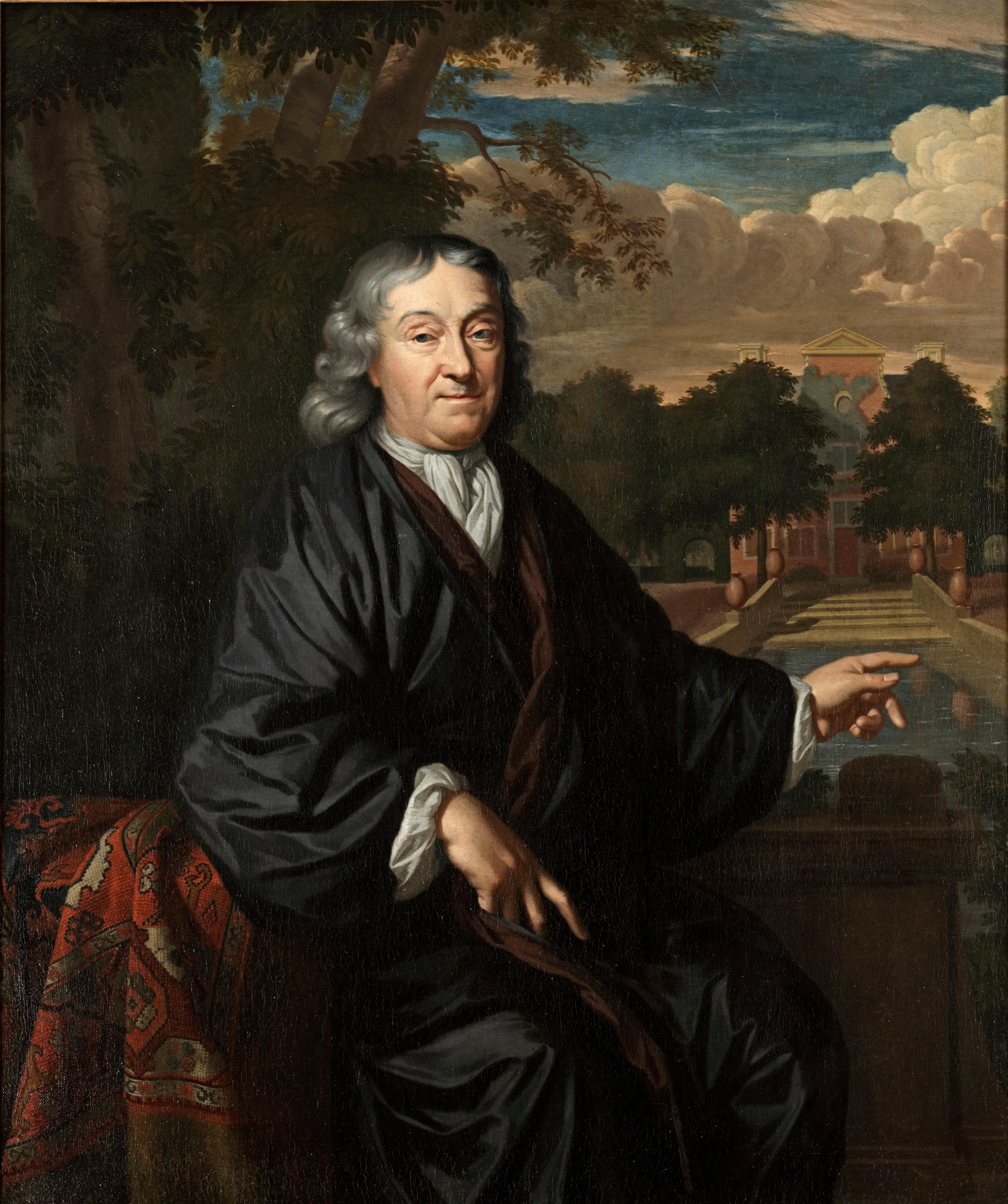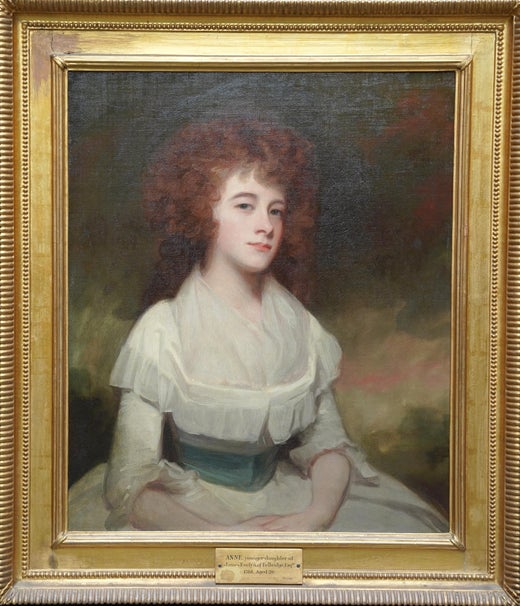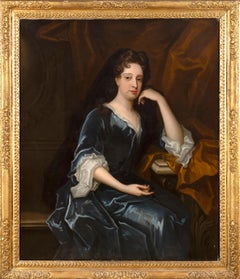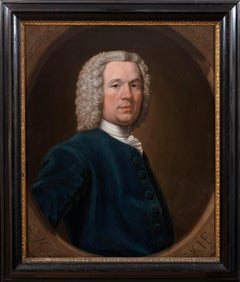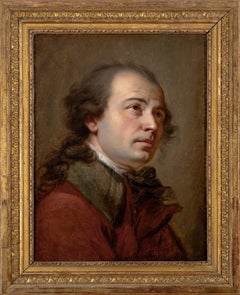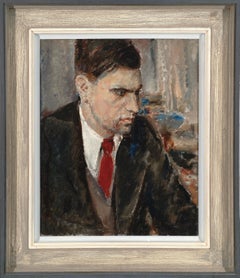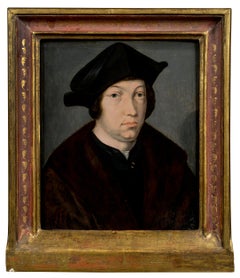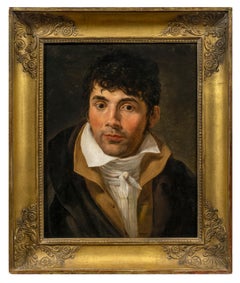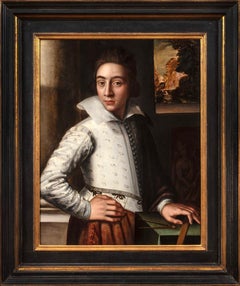George Romney (1734-1802)
Portrait of a Gentleman, traditionally identified as Edward Addison, Esq., c.1780s
Oil on canvas
In a period carved and gilded swept frame
76.3 x 63.2 cm.; (within frame) 100.5 x 88 cm.
Provenance:
Thomas Humphry Ward (1845-1926), London;
From whom acquired by Thomas Agnew & Sons, London, no. 2096 (NGA27/1/1/10, p. 68);
From whom acquired by Nathaniel Thayer III (1851-1911), Boston, 9 May 1907;
By whose executors sold, American Art Association-Anderson Galleries, New York, 25 April 1935, lot 69;
Where acquired by Felix Gouled Gallery, New York;
Plaza Art Galleries, New York;
Nathan B. Spingold (1886-1958), New York;
By whom sold, Parke-Bernet Galleries, New York, 2 March 1950, lot 46;
Where acquired by Kleemann Gallery, New York;
Anonymous sale, Sotheby’s, New York, 5 April 1990, lot 224;
Private collection, United States;
Anonymous sale, Sotheby’s, London, 9 April 2025, lot 77.
Exhibition History:
Reputedly the Worcester Art Museum, Worcester, Massachusetts (probably loaned by Pauline Revere Thayer prior to 1935).
Literature:
American Art Association-Anderson Galleries, Notable Paintings (New York, N.Y.: American Art Association-Anderson Galleries, 25 April 1935), p. 50
Ernst R. Beyard, Art at Auction in America (Silver Spring, M.D.: Krexpress, 1991), p. 166
Alex Kidson, George Romney: A Complete Catalogue of his Paintings (London: Paul Mellon Centre for Studies in British Art), vol. I, p. 113; reproduced vol. III, p. 713 (no. 1552)
Bolesław Mastai, Mastai’s Classified Directory of American Art and Antique Dealers (s.n.: New York, 1950), p. 508
Parke-Bernet, Old Masters (New York, N.Y.: Parke-Bernet, 2 March 1950), reproduced p. 56
Sotheby’s, Old Master Paintings (New York, N.Y.: Sotheby’s, 5 April 1990)
Thomas Humphry Ward and W. Roberts, Romney, A Biographical and Critical Essay with a Catalogue Raisonné of his Works (London: Thomas Agnew & Sons, 1904), vol. II, p. 2
Archival
Witt Library, Courtauld Institute of Art (British School, 243041)
Witt Library, Courtauld Institute of Art (British School, 243042)
Witt Library, Courtauld Institute of Art (British School, 243040)
Painted in half-length, Romney’s subject wears a powdered tie-wig, fastened en queue with a black ribbon, alongside a stock and cravat underneath a dark blue jacket trimmed with brass buttons. A warm tonal background loosely suggests a landscape beyond. Measuring 30 x 25 inches, the portrait is of the standard size of Romney’s half-length commissions ‒ for which he would have charged some 25-30 guineas for this period. The broad and opaque handling belongs stylistically to the artist’s output of the late 1780s, a spell of great productivity which averaged about a portrait a day during the season. The work is compositionally close to that of Sir George Gunning Bt. (1753-1825), painted in 1786, which would suggest a proximity of creation. Romney reworked this evidently satisfactory arrangement, down to the highlight on the gentlemen’s left shoulders and unfastening of the lower jacket buttons.
The sitter has traditionally been identified as Edward Addison Esq., a merchant of 22 Surrey Street, Strand, since its earliest record as no. 2096 in the stock book of Thomas Agnew & Sons. Addison was divorced from his wife Jane Campbell (1771-1851) in 1801, who became the first woman to successfully petition Parliament for a divorce following Addison’s ‘incestuous’ adultery with her sister, Jessy Campbell, only three years after their marriage. Addison soon fled abroad to Hamburg to avoid the award of some £5,000 in damages and costs to Jessy’s husband, equating to over £300,000 in modern terms. Notably, Campbell attained custody of the couple’s two children and was free to remarry.
The portrait was acquired by Agnew’s in 1907 from the author and journalist Thomas Humphry Ward (1845-1926), who in 1904 had published an extensive catalogue and biography on the artist. Ward sold the present portrait along with another by Romney and one by Lawrence, having previously sold Romney’s portrait of Jane Dawkes Robinson to Agnew’s in 1906. Ward presumably acted as an agent on behalf of Romney owners with whom he had likely become acquainted in compiling his catalogue. The present portrait was bought from Agnew’s on 9 May by the prominent banker and railroad executive Nathaniel Thayer III. Subsequent owners included the motion picture executive Nathan B. Spingold, who likely kept the work at his townhouse of 12 East 77th Street, a property formerly owned by Reginald Claypoole Vanderbilt (1880-1925). Spingold along with his wife Frances assembled an outstanding and diverse collection, honoured with the Nate and Frances Spingold Collection exhibition at the Metropolitan Museum of Art in 1960.
Alex Kidson in his comprehensive catalogue of the artist’s works records the present portrait as no. 1552, although questions the traditional identification of Edward Addison on the basis that there is no record of him having sat for Romney. Addison’s wife (as she was then) was painted by Romney in 1788, attending eight sittings between 21 February and 18 March. The portrait was delivered to Addison at Surrey Street on 26 May, who paid Romney on 19 June. Addison was also visited by Romney on 11 January 1790, most likely in connection with his commission for Sir Archibald Campbell, Jane Campbell’s uncle. Addison received the portrait eight days after Campbell’s death, and paid Romney 70 guineas on the 15th. Though it is not clear whether Ward simply maintained or in fact suggested the identification of Addison, his studies at Brasenose College, Oxford, happened to coincide with Jane Campbell’s grandson by her second marriage, Duncan Pocklington (1841-1870). It is not implausible that a portrait of Addison might have passed by descent, and Pocklington introduced his half-relations (and the portrait) to Ward.
Romney was born in December 1734 in Dalton-in-Furness, Cumbria, the third of eleven children to John Romney, a joiner and cabinet-maker, and his wife Anne. The Romney family lived in High Cocken cottage, where Romney spent a decade apprenticed to his father after leaving education in Dendron at the age of eleven. Developing upon a natural ability to work wood, Romney carved and gilded furniture, and made flutes and violins; though his early talent for portraiture attracted the attention of Daniel Gardner’s mother, who commissioned a portrait of herself and persuaded Romney’s father to allow artistic study. A local artist named John Williamson taught Romney informally, and at the age of 21 he moved to Kendal to begin an apprenticeship with Christopher Steele (himself a former student Carle van Loo). Romney was freed from his indentures after Steele had eloped with a young heiress. Romney fell ill with fever and was nursed by the daughter of his landlady, A Miss Mary Abbot who he would marry in 1756 after Abbot fell pregnant.
Romney worked in Kendal, with professional visits to York, Lancaster, Manchester and Cheshire, and trained his younger brother Paul. He went on to London in 1762, concentrating on history scenes. He won second prize in the Royal Society of Arts competition in 1763, though his award of 50 guineas was dubiously reduced to 25 guineas. He travelled to Paris the following year, meeting Jean-Baptiste Greuze and Claude Vernet. He again won the second prize in the RSA competition, and after important society introductions enjoyed significant commissions and exhibition successes. In 1773 he travelled to Italy to study the masters, arriving in Rome in June where a letter of introduction allowed him an audience with Pope Clement XIV, who authorised scaffolding to be erected in the Apostolic Palace for Romney to study Raphael’s frescoes. Romney returned to London after two years in Rome.
Upon his penniless return to London in 1775, Romney took a long lease on Francis Cotes’ house at 32 Cavendish Square. Consolidating his poor finances with a number of important commissions, he joined Reynolds and Gainsborough as a leading portraitist ‒ despite resisting urges to join the Royal Academy, to the contempt and jealousy of the older Reynolds. Romney was thereabouts introduced to Emma Hamilton (later mistress to Lord Nelson), who became the muse reproduced in over 60 portraits and mythological scenes. Romney left his studio at 32 Cavendish Square to Hampstead in 1796, though after costly building work and bad health had abandoned the house two years later. He returned to his wife Mary in Kendal after their long separation, and was nursed by her until his death in 1802. He is buried at St Mary’s Church, Dalton-in-Furness.
Some two thousand of Romney’s works survive in public collections, a testament to the artist’s stamina and popularity of his distinctly buoyant though natural style.
Bibliography and further reading:
Alex Kidson, George Romney; 1734-1802 (Princeton, N.J.: Princeton University Press, 2002)
Alex Kidson, George Romney: A Complete Catalogue of his Paintings, 3 vols. (London: Paul Mellon Centre for Studies in British Art)
Barry E. Mclean-Eltham, George Romney: Paintings in Public Collections (Kendall: Romney Society, 1996)
Humphry Ward and W. Roberts, Romney: A Biographical and Critical Essay, with a Catalogue Raisonné of his Works, 2 vols. (London: T. Agnew and Sons, 1904)
